Wild Mushroom Cassoulet with Crispy Sage
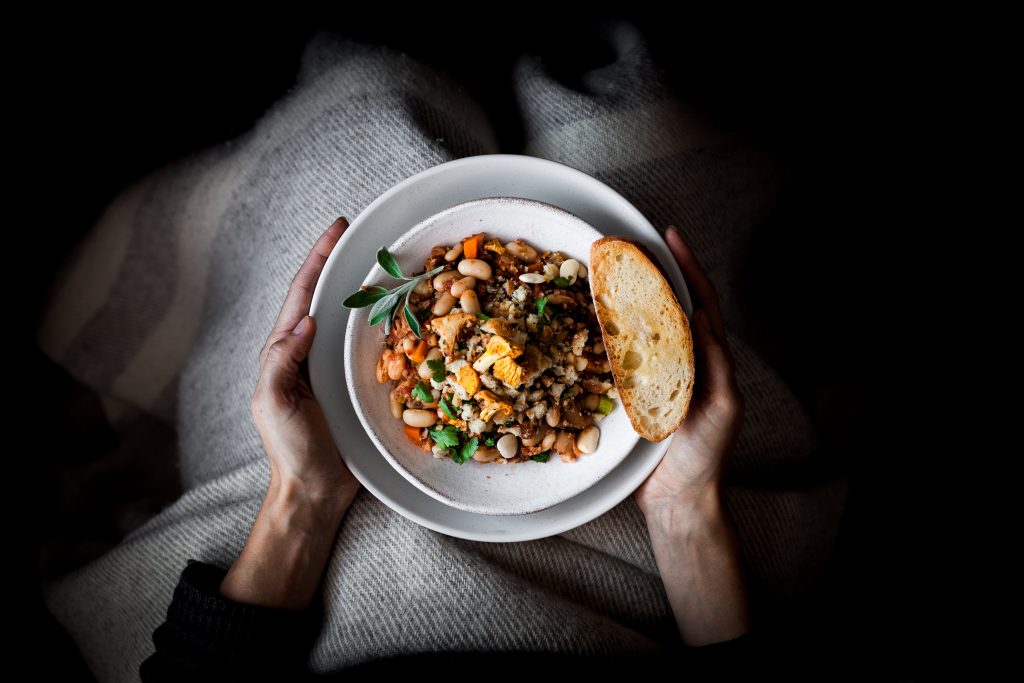
With the arrival of autumn come dropping temperatures, falling leaves, and an ever increasing desire to subsist solely on comfort food.
The few weeks prior also herald the start of chanterelle season here on the west coast. After the first September rainfall, chanterelle mushrooms start to appear at our local grocer and market. On Vancouver island, both white and golden chanterelles can be found, however, there are many different kinds which can be sourced around certain parts of Canada, the US, and Europe.
Chanterelles are a very popular wild edible mushroom and for good reason- they’re absolutely delicious when cooked into a risotto or stew, or simply fried with a little garlic. Due to their very specific growing conditions, chanterelles are very difficult to produce commercially, so, if you happen to see them in your local grocer or market, it’s because a professional forager took the time to find them. Of course, don’t forage for chanterelles yourself- leave it to the experts who can properly identify them; there are a few look-alikes that are quite poisonous!

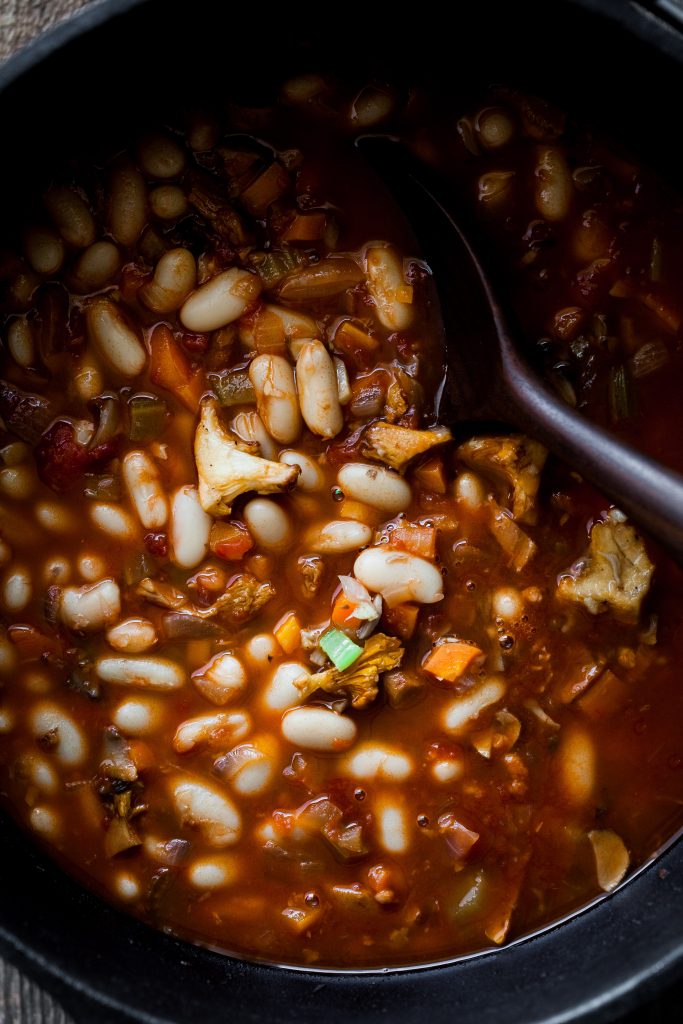
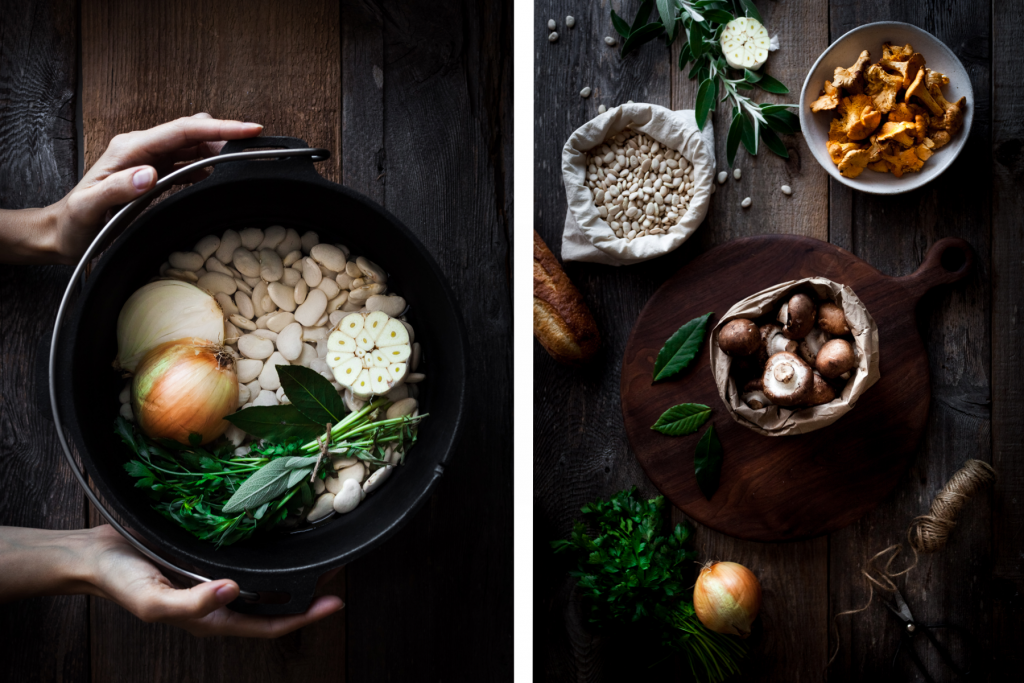
What is Cassoulet
Cassoulet is a well-known comfort dish originating from the southwest of France. There are many regional variations of this classic, however, all are comprised of a base of white beans stewed for hours with several different preparations of either mutton, pork, or duck typically. Depending on the region, it may also have a crispy crumb topping- this is common for Toulouse variations.
Instead of the latter listing of ingredients, this recipe is made meaty with mushrooms – cremini and chanterelles are cooked into a hearty and robust, ragout, then baked with aromatic cassoulet beans and herbed bread crumbs. This recipe is, essentially, the plant-based answer to traditional cassoulet.
Like traditional cassoulet, this recipe comes together in several components, however, it only requires one day in advance for soaking beans and has a much shorter cooking time overall.
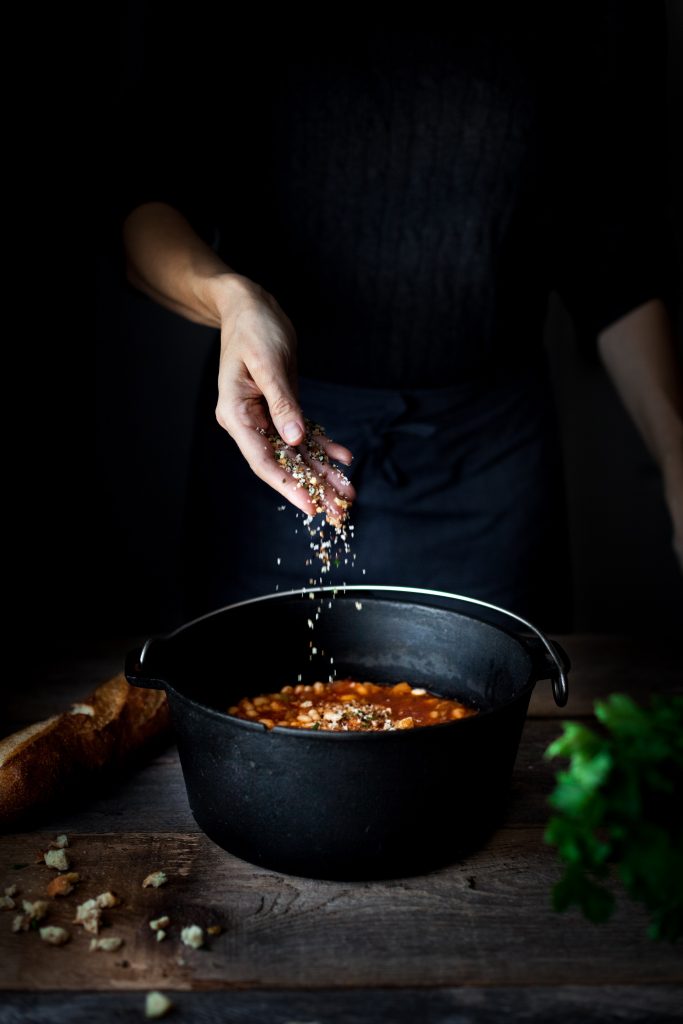
Keys to making this recipe work
Cassoulet is best when the beans are cooked from scratch – canned do not offer the same flavour or texture. Unfortunately, dried cannellini/white kidney beans are not easy to find. As such, if you can’t source them at your local grocer, order them online or opt to use white navy beans or great northern beans. White kidney beans have a wonderful creamy texture once cooked, hence why they are the preferred cassoulet bean.
Next, you want to reduce the ragout until it resembles a stew (see third image above). If you find that the ragout is too thick, add more broth or cooking liquid from the beans. As the cassoulet bakes, the bread crumbs and beans will soak up moisture- you don’t want something too thick, otherwise your cassoulet will be somewhat dry.
A good quality 3.5 quart braiser pan makes a perfect baking vessel for this recipe, however, any shallow casserole or oven proof dish will work.
Finally, if you prefer this recipe to be a tad richer, use butter instead of olive oil. If you have never made a bouquet garni, please visit this post.
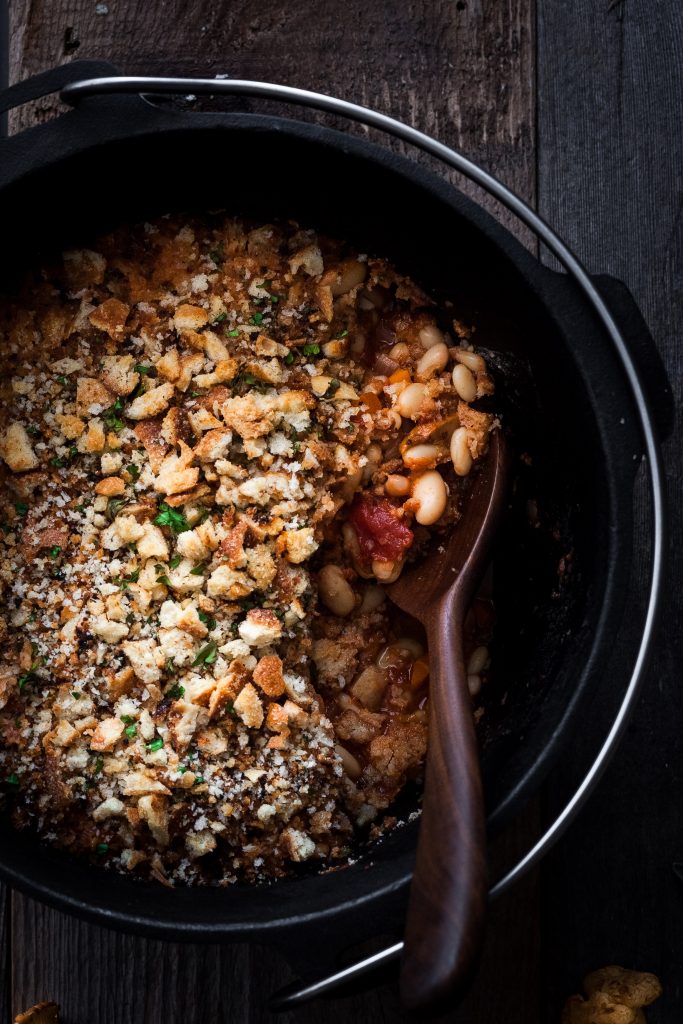
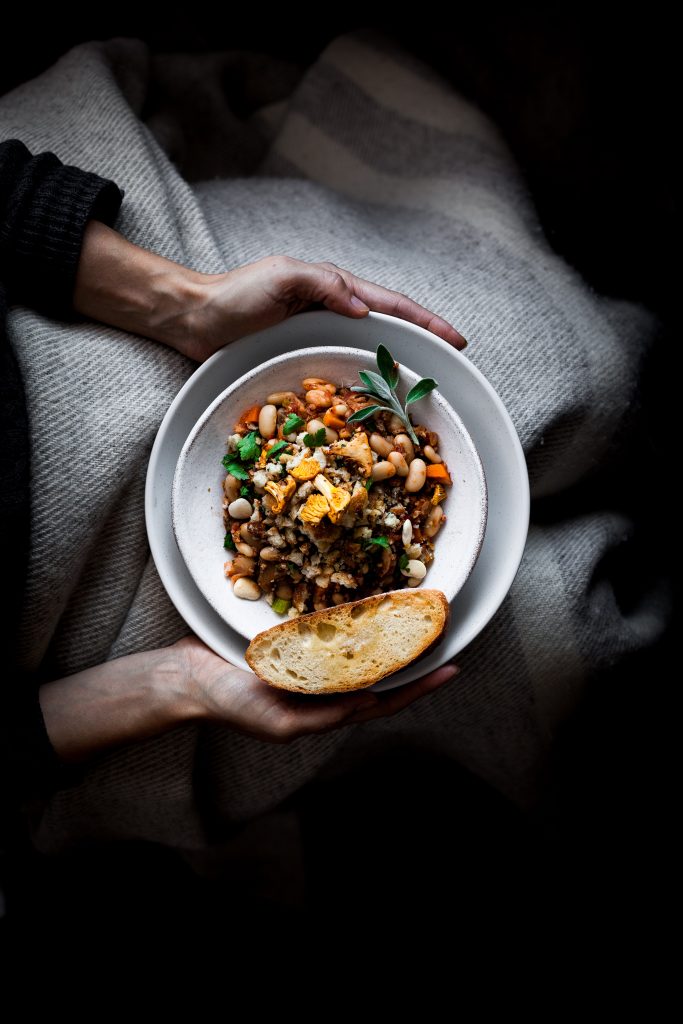
Wild Mushroom Cassoulet with Crispy Sage
Chanterelle and cremini mushrooms are cooked into a hearty ragout and baked with aromatic white beans and herbed bread crumbs in this vegan-friendly cassoulet. This recipe requires advanced preparation – soak the beans the night before. A 3.5 quart braiser pan makes a perfect baking vessel for the cassoulet, however, any oven proof casserole dish will work. If you have never made a bouquet garni, please visit this post.
Time saving tip – toast the bread crumbs up to a day in advance and keep them in an airtight container. Mix in the parsley prior to using. You can also opt for prepared bread crumbs instead of making your own.
Prep Time | 12 hours
Cook Time | 90 minutes
Serves | 6
INGREDIENTS
For the Beans
- 1 1/2 cups (~1/2 lb) dried cannellini beans (to equal ~4 cups cooked)
- 1 onion, unpeeled and sliced in half length-wise
- 1 head garlic, unpeeled and sliced in half width-wise
- 1 Bouquet Garni of:
- 6 sprigs fresh parsley
- 2 sprigs fresh tarragon
- 2 bay leafs
- 5-6 cups water
- Salt and fresh ground pepper
Wild Mushroom Ragout
- 2 tablespoons olive oil (or butter)
- 4 cloves garlic, finely chopped
- 1 medium onion, finely chopped
- 1 medium carrot, diced
- I celery stalk, diced
- 1 tbsp tomato paste
- 100 g chanterelle mushrooms, washed and roughly chopped
- 125 g cremini mushrooms, washed and roughly chopped
- 2 tbsp dry white cooking wine
- 14oz can crushed tomatoes
- 1 cup vegetable broth
- Salt and fresh ground pepper
Herb Bread Crumbs
- 1 tbsp olive oil (or butter)
- 2 cups fresh bread crumbs
- Salt and pepper
- ¼ cup fresh parsley, finely chopped
Crispy Sage Garnish
- ¼ cup olive oil
- 12 sage leaves
- Pinch of salt
DIRECTIONS
Cook the Beans
- In a large pot, add the beans and enough water to cover by 2”. Let soak for minimum 8 hours or overnight. Rinse and drain the beans then add them to a large pot.
- Tie the garlic halves in cheese cloth and add it to the beans along with the onion halves, bouquet garni, bay leafs, salt and pepper, and water. Bring to a boil then reduce and simmer until the beans are tender, but not falling apart (about 1 – 1 ½ hours). If the cooking liquid reduces too much before the beans are cooked, add more water.
- Once the beans are cooked, remove the onion, garlic, bouquet garni, and bay leafs from the beans.
Make the Wild Mushroom Ragout
- In a large skillet, heat the olive oil and add the onion, garlic, carrot and celery. Cook over medium heat until softened (about 5 minutes). Add the mushrooms and cook until lightly browned and the moisture from the mushrooms has almost evaporated (about 5-6 minutes). Season with salt and pepper.
- Deglaze the pan with the cooking wine, making sure to scrape up the brown bits from the bottom of the pan. Add the tomato paste, crushed tomatoes and vegetable broth. Bring to a boil then reduce to a simmer for 10 minutes, or until thickened slightly.
- Add the beans: Using a slotted spoon, remove the beans from their cooking liquid and transfer them to the ragout. Add one or two ladles of the bean cooking liquid to the skillet. Bring the mixture to a boil and simmer until reduced and thickened (about 10-15 minutes). It should have the consistency of not -too-thick stew (see third image above). If it is too thick, add more vegetable stock or cooking liquid from the beans.
Toast the Bread Crumbs
- In medium skillet, heat the olive oil and toast the bread crumbs, stirring frequently until they are starting to brown. Remove from heat, season lightly with salt and pepper and stir in the chopped parsley.
Crispy Sage
- In a small skillet, heat the olive oil. Carefully add the individual sage leaves and fry for about 10-12 seconds, using a fork or tongs to gently flip each leaf halfway. Quickly and carefully remove them from the oil and set on a plate lined with paper towel to absorb excess oil. [The leaves should be crispy, but not browned or black]. Season with a pinch of salt. Set aside.
Assemble and Bake
- Preheat the oven to 350’F. Add the mushroom and bean mixture to a 3.5 quart braiser pan or a shallow casserole dish, then top evenly with the bread crumbs. Bake in the preheated oven for 20-25 minutes, or until thickened and bubbling around the edges. Remove and let cool slightly. Serve with additional fresh parsley or 1 or 2 crispy sage leafs.
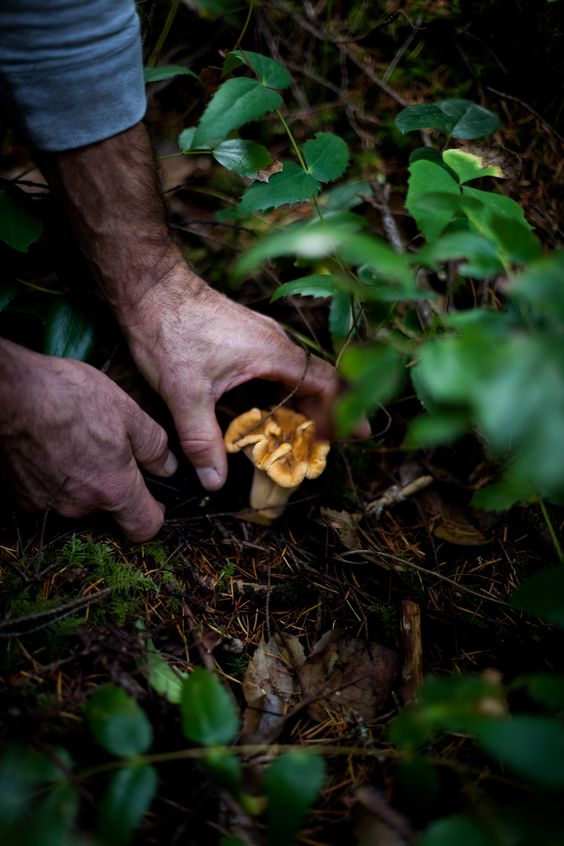

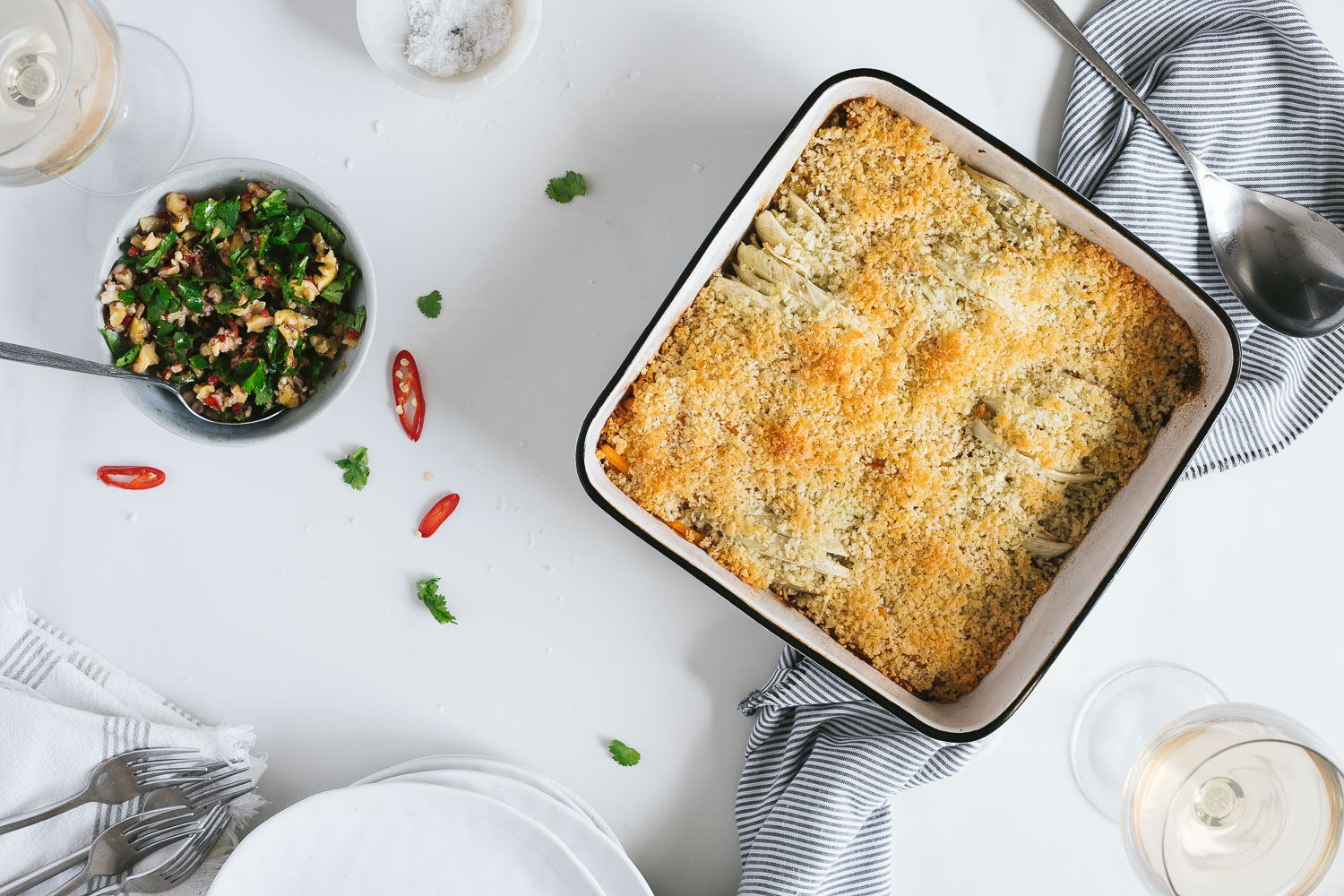
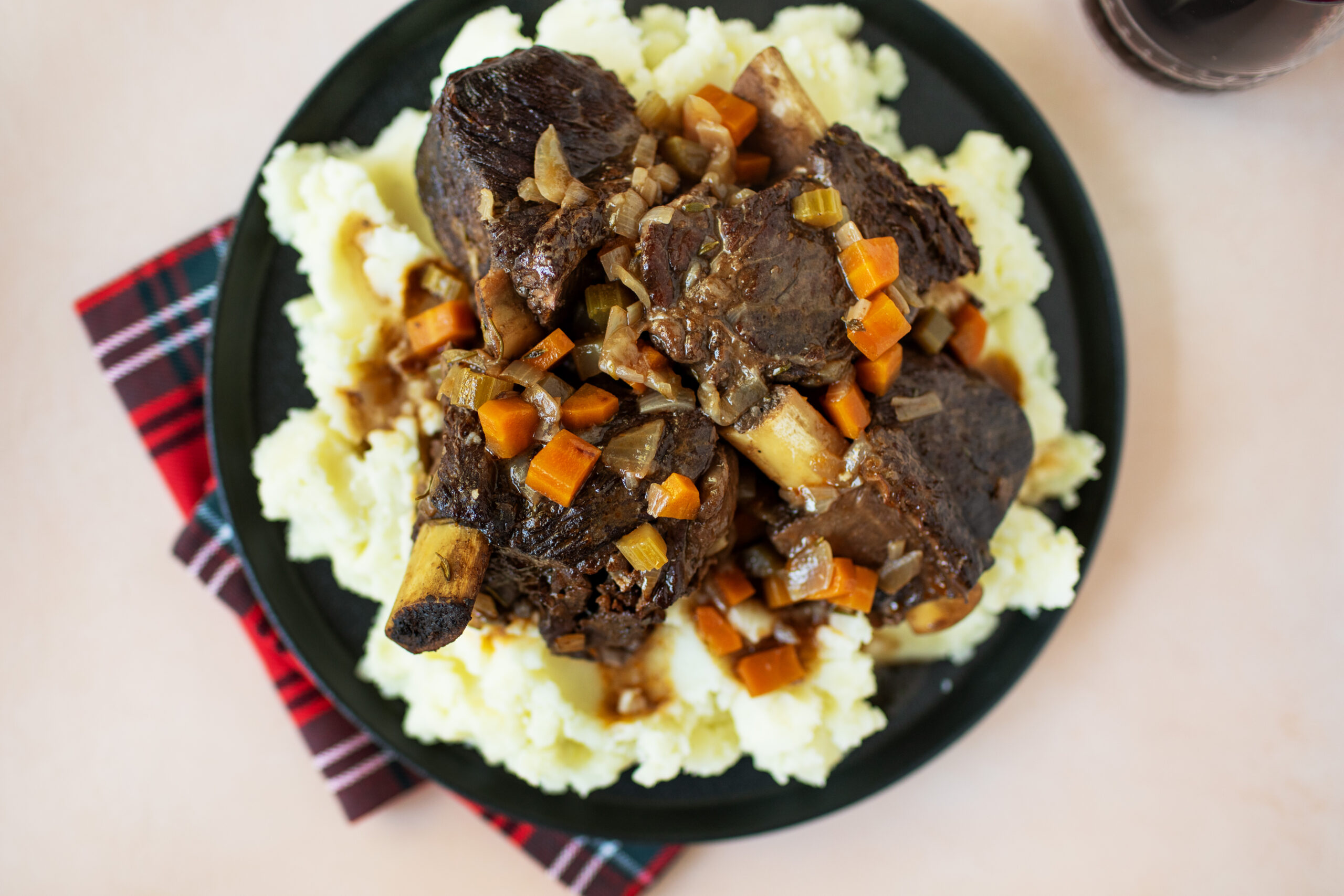
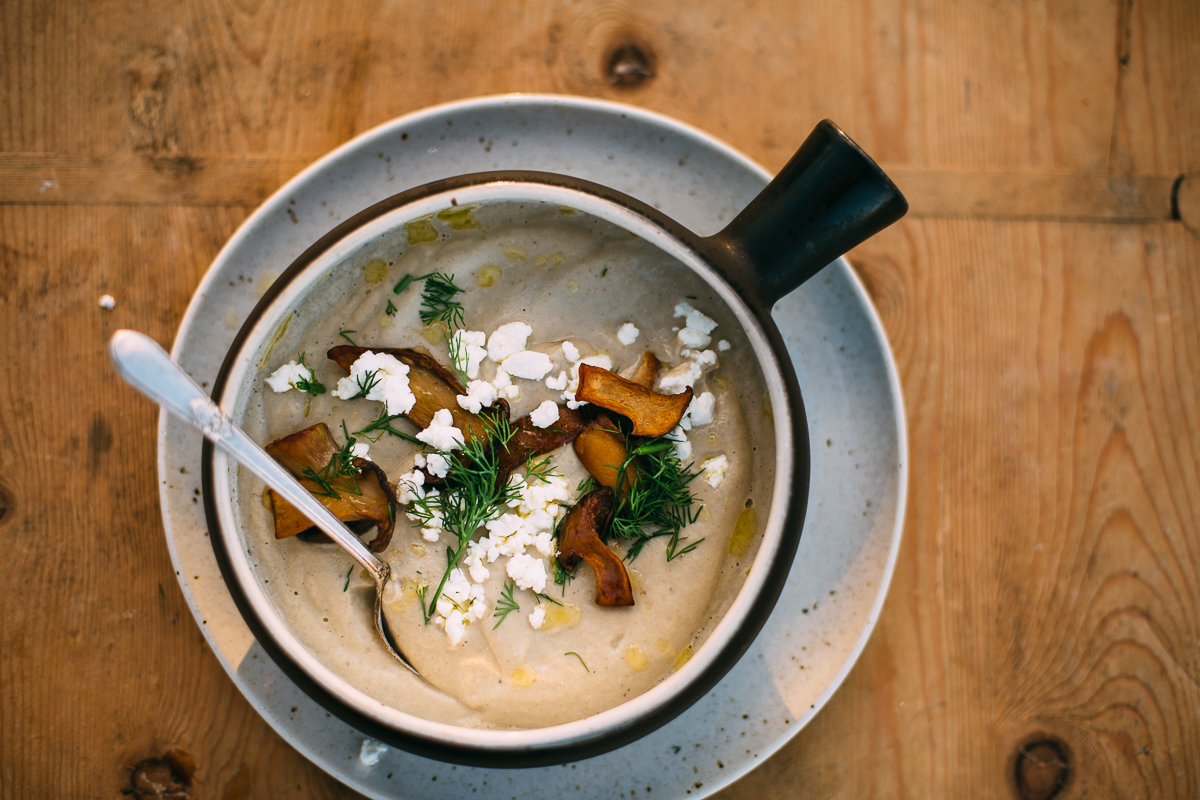
Beautiful website Heidi! Catering a wedding for a friend who’s son is getting married….she is a ridiculous mushroom forager and has supplied is with a bounty of various shrooms…..so I am taking advantage of your recipe…….I’m certain it will be very well received!,,,,,,
Dull and disappointing: The breadcrumbs sit on top with nothing to coagulate but rising liquid that either makes the crumbs soggy or loose-dry. The Ragout is mild and needs a rich broth. The tomato overpowers the mushroom flavor and 2tbsp of oil isn’t enough to emboldend the ragout flavor. More oil is used cooking the sage than in the dish. The second time I made this dish, I used: 1/2 cup of olive oil in the ragout and added Herbs-de-provence, and left out the tomato paste. 2 cups of Roqufort cheese to the breadcrumbs. I reduced 8 cups of homemade vegetable stock to 1 cup of a deep rich and thick stock. The ragout came out firm and flavorful. The cheese and breadcrumbs bold and rich. The fried sage was delicious. Use big sage leaves and be more generous than the written recipe.